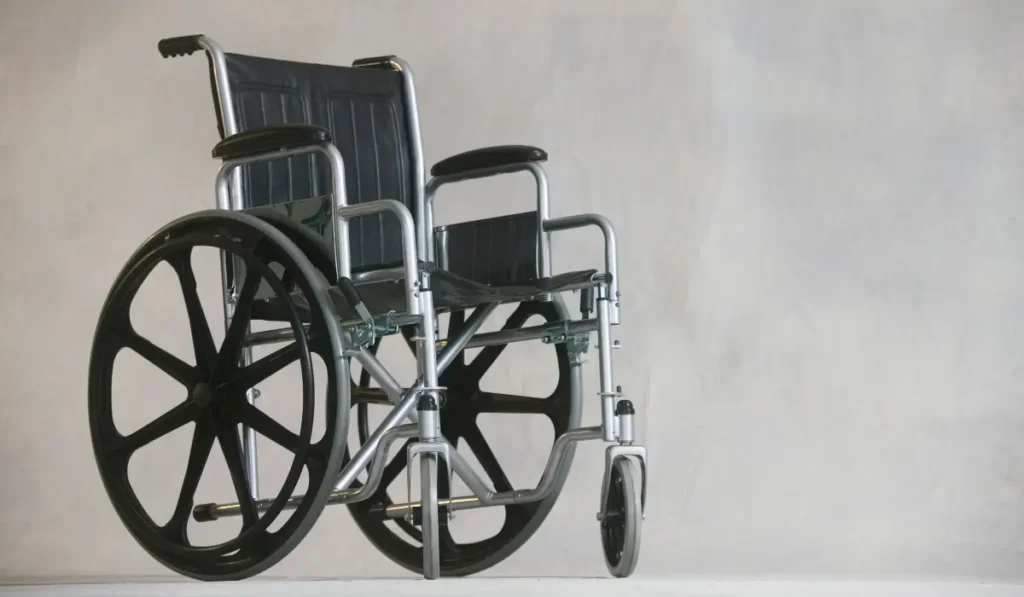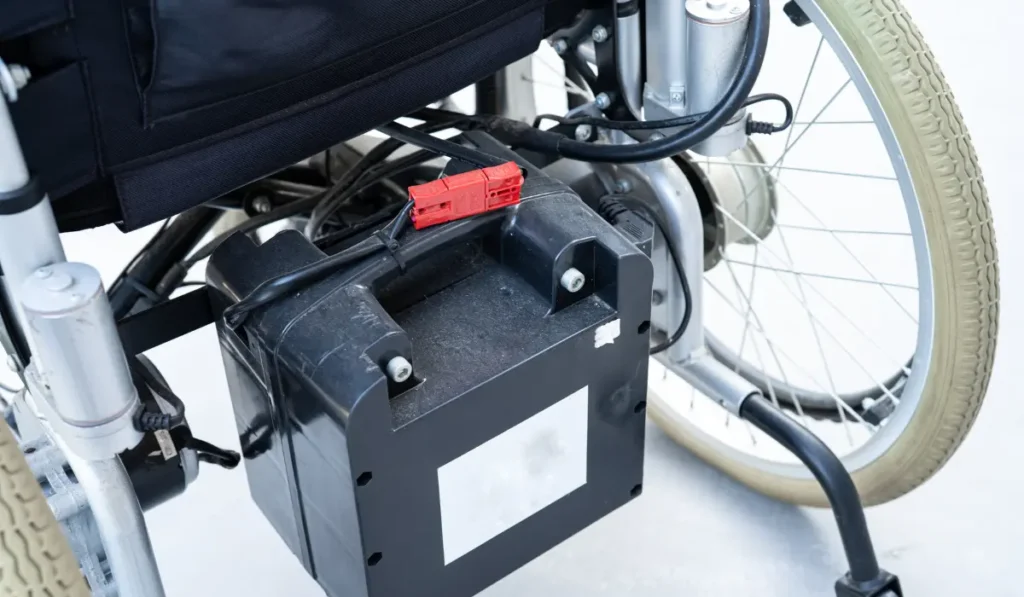Navigating the world of wheelchairs can be confusing, especially with so many options available. This guide will explore different types of wheelchairs and highlight their unique features and uses, helping you find the perfect fit for your mobility needs.
Key Takeaways
- Wheelchairs are essential mobility aids designed to accommodate individuals with limited mobility, providing them with independence and the ability to navigate their environment.
- Manual wheelchairs come in various types to cater to specific needs and preferences, including lightweight, self-propelled, and transport/companion models.
- Power wheelchairs offer advanced solutions with electric or motorized systems, featuring different drive configurations such as rear-wheel, front-wheel, and mid-wheel drive for enhanced maneuverability and user experience.
Apply for CDPAP or HHA today
Manual Wheelchairs

Manual wheelchairs are the traditional, non-powered option for individuals with mobility limitations. They come in various styles and configurations, each designed to meet specific needs and preferences.
From lightweight and ultra-lightweight models to heavy-duty designs, manual wheelchairs offer a range of choices for users to maintain their independence and navigate their surroundings. This section will explore the different types of manual wheelchairs and their unique features.
Lightweight
Lightweight wheelchairs are designed with aluminum or titanium frames, making them easier to maneuver and transport. They weigh 25-40 lbs and are ideal for users who require a wheelchair for daily use or have limited upper body strength. Their lighter weight allows for more effortless propulsion and increased independence.
Standard Weight
Standard wheelchairs, constructed with steel frames, typically weigh between 35-50 lbs. These cost-effective options cater to users who don’t require frequent transportation or caregiver assistance. With basic functionality and durability, these wheelchairs come with fixed or detachable armrests and various other accessories that wheelchair users can choose from based on their personal preferences and needs.
Self-Propelled
Self-propelled wheelchairs are designed for users with sufficient upper body strength who want to maintain an active lifestyle. These wheelchairs feature handrails attached to the rear wheels, enabling users to propel themselves independently.
Ideal for those who value autonomy and increased mobility, self-propelled wheelchairs are an excellent choice for users who can efficiently navigate their environment without needing assistance from a caregiver or companion.
Foot-Propelled
Foot-propelled wheelchairs are a distinctive type of manual wheelchair designed with removable footrests to utilize feet for movement. This design is particularly beneficial for individuals who need to cover short distances on level surfaces.
These wheelchairs provide an alternative method of propulsion for those with adequate leg strength but limited upper body strength, allowing them to maintain independence and control over their mobility.
Transport/Companion
Transport chairs, also known as companion wheelchairs or rollabout chairs, are lightweight, foldable wheelchairs specifically designed for easy transportation.
Unlike traditional manual wheelchairs with two large rear wheels and two small front casters, transport chairs feature four small wheels. This design means the user cannot self-propel, and a caregiver or companion must push the wheelchair.
These chairs are ideal for occasional use, such as attending medical appointments or enjoying short outings, providing convenience and ease of transport for the user and their caregiver.
Reclining Back
Reclining-back wheelchairs feature an adjustable backrest that allows users to recline their seating position. These wheelchairs provide additional comfort, especially for individuals who need to spend extended periods in a seated position or require pressure relief.
Heavy Duty
Heavy-duty wheelchairs, or bariatric wheelchairs, are specifically designed to accommodate users with higher weight capacities—usually above 300 lbs. These robust wheelchairs feature reinforced frames, wider seats, and durable materials to ensure stability, comfort, and long-lasting performance for larger individuals.
Additionally, heavy-duty wheelchairs often have adjustable components, such as armrests and footrests, to provide a customizable fit for the user. They are an excellent choice for those requiring extra support and sturdiness in their mobility aid without compromising functionality and ease of use.
Sport Wheelchairs
Sports wheelchairs cater to athletes engaging in activities like basketball, tennis, or racing. These specialized wheelchairs feature lightweight frames and specialized wheels for enhanced stability and maneuverability.
Each sports wheelchair incorporates unique features tailored to the sport, such as reinforced bumpers or customized seating. Designed to handle competitive play, these wheelchairs enable athletes with limited mobility to enjoy various sports while maximizing their potential.
Pediatric Wheelchairs
Pediatric wheelchairs are designed for children with mobility impairments, providing support and independence. These wheelchairs have smaller frames, adjustable components for growth, and customizable options for special seating or positioning needs.
Often including accessories like headrests or lateral supports, pediatric wheelchairs promote proper postural alignment and comfort, enabling children to engage in daily activities and socialize with peers, fostering overall development and well-being.
Tilt-in-Space Wheelchairs
Tilt-in-space wheelchairs are designed for individuals who need improved pressure relief, positioning, and postural support due to conditions like cerebral palsy, spinal cord injuries, or muscle weakness.
Unlike reclining back wheelchairs, which change the user’s posture and may cause shearing, tilt-in-space wheelchairs maintain the user’s posture while tilting the entire seat backward. This feature redistributes pressure away from the hips and onto a larger surface area, reducing the risk of bedsores and providing better back alignment. This is especially beneficial for users with limited muscle control or those prone to pressure sores.
Power Wheelchairs

Power wheelchairs, also known as motorized or electric wheelchairs, offer an advanced solution for individuals with limited mobility, providing increased independence and ease of movement.
These wheelchairs come in various designs and configurations, each with benefits and potential drawbacks. This section will delve into the different types of power chairs, their drive systems, and their pros and cons so you can make an informed decision.
Rear-Wheel Drive
A rear-wheel drive wheelchair has two big wheels at the back and smaller wheels at the front. This design makes it more stable and easier to use outdoors, especially on uneven or rough ground.
These wheelchairs usually have a control stick for steering and a seat that can swivel, which makes getting in and out of the chair easier. It’s great for people who need a wheelchair for outdoor activities like beaches or other natural settings.
Pros and Cons of Rear-Wheel Drive
| Pros | Cons |
| Stable and durable, suitable for outdoor use | Larger turning radius may make it difficult to navigate tight spaces |
| Better traction on uneven surfaces | Slower turning speed compared to other drive options |
| Larger turning radius allows for smoother turns | May require more storage space than other power wheelchairs |
Front-Wheel Drive
Front-wheel drive wheelchairs have big front wheels and smaller ones at the back. This design makes it easier to turn in tight spaces, like inside a house or in crowded places.
These wheelchairs are often used as an alternative to mobility scooters because they offer similar ease of movement but come with extra support and features. For example, they may include adjustable seat heights, reclining backs, and leg rests that can be elevated or swung away for easier transfers.
Pros and Cons of Front-Wheel Drive
| Pros | Cons |
| Tight turning radius, suitable for navigating tight spaces | Reduced stability at higher speeds |
| Better performance on inclines and uneven surfaces | Slower overall speed compared to rear-wheel and mid-wheel drive options |
| Generally quieter operation | Potential difficulty with curb climbing due to drive wheel position |
Mid-Wheel Drive
Mid-wheel drive wheelchairs have big wheels in the middle and smaller wheels at the front and back. This design makes turning very easy—even in very tight spaces. These wheelchairs are great for indoor use because they can move around easily.
Some mid-wheel drive chairs can also help users stand up, which can be good for their health and make it easier to talk to others.
Naturally, this is perfect for people who spend a lot of time indoors, such as those who live in apartments or assisted living facilities.
Pros and Cons of Mid-Wheel Drive
| Pros | Cons |
| Excellent maneuverability with the tightest turning radius | Reduced performance on rough terrain and slopes |
| Good performance on smooth, level surfaces | Increased wear on the center drive wheels |
| Balanced weight distribution for a comfortable ride | Less stability on side slopes compared to other drive options |